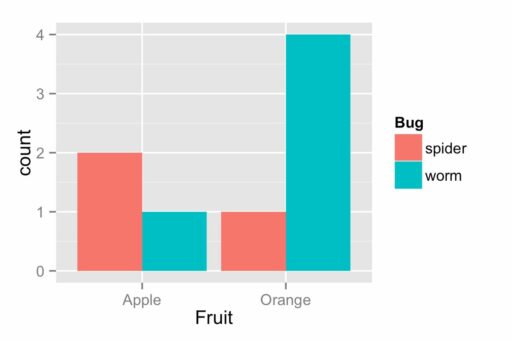Table of Contents
In the realm of research, qualitative data stands out as a crucial element for understanding the nuances of human thoughts, behaviors, and experiences. Unlike quantitative data, which focuses on numbers and statistical analysis, qualitative data delves into the subjective and often complex aspects of our world. This article aims to shed light on the nature of qualitative data, its analysis, and its significance in various fields, providing a comprehensive understanding of its definition and application.
Key Takeaways
- Qualitative data encompasses non-numerical insights such as opinions, experiences, and motivations, obtained through methods like interviews and observations.
- Analysis of qualitative data involves an iterative process that includes coding, categorizing, and theme development to extract meaningful patterns.
- Qualitative research provides a rich, contextual understanding of subjects, offering flexibility and depth that quantitative research may not capture.
- Despite its depth of insight, qualitative data analysis faces challenges regarding reliability, validity, and the potential for data overload.
- Real-world applications of qualitative data are vast, influencing areas such as product development, customer experience, and strategic decision-making.
The Essence of Qualitative Data


Defining Qualitative Data
Qualitative data encompasses the rich, descriptive information that is gathered from various sources such as interviews, open-ended surveys, and participant observations. Unlike its quantitative counterpart, qualitative data is not about numbers or statistics; it’s about the depth of understanding that comes from analyzing the subjective experiences and opinions of individuals.
Qualitative data analysis is an intricate process that involves sifting through non-numerical, textual data to extract meaningful insights. This type of data is often more nuanced and can reveal the motivations, beliefs, and feelings that drive human behavior.
Examples of qualitative data include:
- Gender
- Beliefs and values
- The reasoning behind behaviors
- Political or religious views
- Reasons for customer churn
Understanding qualitative data is crucial for researchers who aim to grasp the complexities of human experiences and the subtleties that quantitative data might overlook.
Characteristics of Qualitative Data
Qualitative data is inherently rich and complex, offering a nuanced glimpse into the human experience. It captures the depth of people’s feelings, thoughts, and behaviors, providing insights that quantitative data alone cannot. This type of data is typically text-based and descriptive, and it can come from various sources such as interviews, open-ended surveys, and observations.
- Subjectivity: Qualitative data is subjective, reflecting personal perspectives and experiences.
- Contextual: It provides context to behaviors and decisions, revealing the ‘why’ behind actions.
- Non-standardized: Unlike quantitative data, it is not easily reduced to numbers or graphs.
- Richness: The data is detailed and can uncover underlying meanings and motivations.
Qualitative data’s strength lies in its ability to convey the intricacies of human thought and culture, which are often lost in numerical representation. While it may not always be generalizable, it is invaluable for gaining a comprehensive understanding of a research subject.
Comparing Qualitative and Quantitative Data
Understanding the distinction between qualitative and quantitative data is crucial for researchers and analysts. Quantitative data analysis focuses on numerical data, identifying patterns and trends through systematic measurement and hypothesis testing. It is often represented in graphs and charts, making it easier to visualize and compare. On the other hand, qualitative data analysis delves into words and meanings, providing subjective insights that numerical data cannot capture.
- Quantitative data is typically collected through methods such as surveys with closed-ended questions, test scores, and behavioral scales.
- Qualitative data collection involves interviews, open-ended survey responses, and observations, aiming to gather rich, descriptive information.
The choice between qualitative and quantitative research methods depends on the research question and the nature of the data required. While quantitative data offers statistical rigor, qualitative data provides depth and context, revealing the ‘why’ behind the numbers. In many cases, a mixed-method approach can leverage the strengths of both to provide a more comprehensive understanding.
Methodologies in Qualitative Data Analysis


Overview of Analysis Methods
Qualitative data analysis is a multifaceted process that involves several methodologies, each with its own set of procedures and outcomes. The primary goal is to distill complex, textual data into comprehensible, actionable insights.
The following list outlines the five primary methods of qualitative data analysis:
- Content analysis: Systematic examination of text for patterns and themes.
- Narrative analysis: Interprets stories to understand underlying feelings and behaviors.
- Discourse analysis: Studies language use beyond the sentence level to understand social and cultural contexts.
- Grounded theory: Generates hypotheses directly from the data.
- Thematic analysis: Identifies patterns and themes across a data set.
The choice of analysis method hinges on the nature of the research question, the type of data collected, and the researcher’s expertise and available resources.
Each method offers a unique lens through which data can be examined, providing a rich tapestry of qualitative insights. The iterative nature of these methods allows for continuous refinement and deeper understanding of the data.
The Iterative Process of Analysis
Qualitative data analysis is inherently an iterative process, requiring researchers to delve deeply into the data, often circling back to earlier stages as new insights emerge. This process is not linear but rather a cycle of reading, reflecting, coding, categorizing, and theme development. It’s a journey from raw data to conceptual understanding, where each step informs and refines the next.
The iterative nature of qualitative analysis means that researchers must remain flexible and open to revisiting data as new patterns or themes are uncovered.
The steps involved in this process are often revisited multiple times:
- Preparing the data
- Reading and reflecting on the data
- Coding the data
- Categorizing the codes
- Developing themes
Each of these steps is crucial and may be more time-consuming or resource-intensive, depending on the depth of analysis required and practical constraints. Choosing the right method for analysis—be it content analysis, narrative analysis, thematic analysis, or grounded theory—is essential and depends on various factors such as the research questions, data type, context, expertise, and available resources.
Coding and Categorizing Data
Once the qualitative data is collected, the next crucial step is coding and categorizing the data to uncover patterns and themes. Coding involves assigning labels or categories to the data. For instance, customer feedback might be coded with ‘P’ for price-related comments and ‘Q’ for quality-related remarks. This initial coding is the foundation for identifying trends within the data.
The process of coding and categorization is iterative and requires a deep understanding of the data to ensure that the codes accurately represent the underlying meanings.
After coding, researchers organize the data to facilitate analysis. This could involve creating a spreadsheet sorted by research questions and themes. For example:
- Review and familiarize with the data
- Disassemble and code data
- Create a codebook with defined codes
- Reassemble data looking for themes
The goal is to move from raw data to a structured format that reveals the qualitative insights needed to answer research questions.
The Role of Qualitative Research


Understanding the Qualitative Research Approach
Qualitative research is a multi-dimensional field that delves into the complexities of human experience and social contexts. It is inherently exploratory, aiming to uncover the ‘how’ and ‘why’ behind human behavior and social phenomena. This approach is particularly adept at capturing the nuances that quantitative methods may overlook.
Qualitative research is not just about collecting data; it’s about interpreting it to reveal deeper insights. Researchers immerse themselves in the environment of their subjects, often developing a close familiarity with the community or setting under study. This intimate engagement allows for a rich, contextual understanding of the topic at hand.
The iterative nature of qualitative research means that data collection and analysis occur simultaneously, with findings continuously refined and hypotheses evolved. This process is crucial for ensuring that the research remains grounded in the reality of the participants’ experiences.
In practice, qualitative research involves a series of methodical steps, from selecting a topic and formulating questions to collecting data and validating findings. Each step is designed to build upon the previous one, creating a comprehensive picture of the subject matter.
Applications of Qualitative Research
Qualitative research is instrumental in a variety of fields, offering a lens through which to explore and understand complex social phenomena. It excels in contexts where the depth of understanding is paramount, such as in cultural studies, education, healthcare, and organizational behavior. By focusing on the human elements of research subjects, qualitative methods provide insights that quantitative data alone cannot reveal.
- In education, qualitative research helps to understand the experiences and perspectives of students and educators.
- Healthcare professionals use it to explore patient experiences and the implications of healthcare policies.
- In the realm of business, it informs organizational strategies and employee engagement.
- Social sciences benefit from qualitative research by gaining a deeper understanding of societal trends and human interactions.
The versatility of qualitative research is evident in its ability to adapt to various research questions and settings. It is not confined to a rigid framework but is open to exploring the nuances and subtleties that define human experiences.
Interpreting Non-Numerical Data
Interpreting non-numerical data is a nuanced process that involves identifying patterns, themes, and insights from various forms of data such as text, images, or videos. Unlike quantitative analysis, which hinges on statistical methods and numerical representation, qualitative analysis employs techniques like coding, thematic analysis, and constant comparison to extract meaning.
The interpretation of qualitative data is not about counting or averaging responses, but about understanding the depth and context of the data presented.
Qualitative data analysis is inherently iterative, where findings from initial analysis inform subsequent rounds of data collection and interpretation. This process ensures a comprehensive understanding of the data:
- Initial coding to identify broad themes
- Focused coding to refine and connect themes
- Thematic analysis to construct a narrative
- Constant comparison to ensure consistency and depth
Challenges such as data overload and concerns over reliability and validity are common, but these are addressed through rigorous methodological approaches and the iterative nature of qualitative analysis.
Advantages and Challenges of Qualitative Data


Uncovering Rich Insights
Qualitative data analysis is pivotal in uncovering rich insights that are often missed by purely quantitative approaches. By delving into the nuances of human behavior, qualitative research reveals the ‘why’ behind the numbers, offering a deeper understanding of complex patterns, motivations, and perspectives.
- Deep Insight: Allows for an in-depth exploration of underlying meanings and trends.
- Flexibility: Adapts to emergent themes, enhancing the robustness of the analysis.
- Contextual Understanding: Provides a rich context to quantitative findings, revealing hidden dynamics.
- Participant Voice: Ensures that the experiences and perspectives of participants are central to the analysis.
Qualitative data analysis is not just about collecting data; it’s about interpreting it to transform insights into actionable strategies. The integration of tools like FullStory, SessionCam, and Smartlook can elevate the analysis by contextualizing data with session recordings and heatmaps, taking your understanding to the next level.
Flexibility and Contextual Depth
One of the most significant advantages of qualitative data is its flexibility in data interpretation. Researchers can delve into emergent themes and adapt their analysis as new insights arise. This adaptability is crucial when exploring complex social phenomena where new variables may come into play during the research process.
Qualitative data analysis also excels in providing contextual depth. It allows researchers to understand the cultural and social nuances that quantitative data might overlook. By considering the values, opinions, behaviors, and social contexts of specific populations, qualitative research offers a comprehensive view that is often necessary for creating meaningful conclusions and applications.
The richness of qualitative data lies in its ability to reveal the intricacies of human experience, which are often lost in numerical data.
While qualitative data offers depth and adaptability, it is important to balance these strengths with practical considerations. Some methodologies may be more time-consuming or resource-intensive, which necessitates a careful assessment of the research goals against the available resources.
Addressing Reliability and Validity Concerns
In the realm of qualitative research, reliability and validity take on different meanings compared to their quantitative counterparts. Qualitative studies prioritize depth over breadth, often leading to skepticism about their replicability and the robustness of their findings. To address these concerns, researchers employ various strategies to enhance the trustworthiness of their data.
Dependability in qualitative research is akin to reliability in quantitative studies. It can be fortified through meticulous data collection and analysis procedures.
Ensuring validity, or the accuracy of findings, involves triangulation methods, where multiple perspectives and methods are used to cross-verify the data. This approach helps in mitigating biases and misinterpretations that could compromise the study’s credibility.
The table below outlines key strategies to bolster reliability and validity in qualitative research:
| Strategy | Description |
|---|---|
| Triangulation | Using multiple data sources, researchers, or methodologies to cross-check findings. |
| Member Checking | Involving participants in reviewing and confirming the accuracy of the data collected. |
| Audit Trail | Keeping detailed records of all research decisions and processes to allow for scrutiny. |
| Reflexivity | Acknowledging the researcher’s influence on the research and reflecting on biases. |
Real-World Applications of Qualitative Data


Examples from Various Fields
Qualitative data is pivotal across various disciplines, offering a lens to understand complex phenomena that quantitative data alone cannot capture. In healthcare, qualitative research might explore patient experiences or the impact of healthcare policies on different communities. In education, it can provide insights into teaching methods or student perceptions that influence learning outcomes.
In the realm of business, qualitative data is crucial for understanding consumer behavior, brand perception, and market trends. For instance, detailed customer interviews and focus groups can reveal preferences and pain points that surveys might overlook. Similarly, in social sciences, qualitative methods such as ethnography or case studies allow for an in-depth examination of social interactions and cultural practices.
- Healthcare: Patient experiences, policy impact
- Education: Teaching methods, student perceptions
- Business: Consumer behavior, brand perception
- Social Sciences: Social interactions, cultural practices
Qualitative data can include a wider range of information than quantitative data by capturing human emotion or sentiment.
Enhancing Customer Experience
In the realm of customer experience, qualitative data serves as a compass, guiding businesses toward improved user satisfaction and loyalty. Building in-app experiences based on qualitative insights can significantly enhance user engagement and drive satisfaction. By understanding the nuances of customer feedback, companies can tailor their offerings to meet the specific needs and preferences of their user base.
The iterative qualitative data analysis process aims to refine understanding of the customer base, allowing for more personalized and effective interactions.
For example, analyzing qualitative feedback may reveal that a particular customer segment frequently encounters issues with certain product features. This insight enables businesses to make targeted improvements. Additionally, tools like Userpilot can automate data collection and analysis, streamlining the process and ensuring a deeper understanding of customer experiences.
- Identify friction points through feedback analysis
- Capitalize on product strengths identified in user comments
- Utilize tools for automated data collection and analysis
Ultimately, by leveraging qualitative data, companies can create a more intuitive and satisfying customer journey, leading to increased retention and a stronger brand reputation.
Influencing Product Development Strategies
Qualitative data plays a pivotal role in shaping product development strategies. By analyzing customer feedback, product teams can identify key themes and patterns that highlight areas for improvement. This iterative process ensures that products evolve in alignment with user needs and preferences.
For instance, an analysis of NPS survey responses may reveal recurring issues such as product defects or pricing concerns. Addressing these insights directly influences the refinement of product features and the overall user experience.
The strategic integration of qualitative data into product development can lead to significant enhancements in functionality and customer satisfaction.
Here are some common methods for collecting qualitative data:
- User feedback
- NPS follow-up questions
- Review sites
- User interviews
- Focus groups
By systematically coding this data to identify themes such as usability issues or desired features, companies can prioritize development efforts that will have the most impact.
Conclusion
In summary, qualitative data serves as a critical component in research, providing depth and context to the human aspects of study that quantitative data alone cannot capture. It allows researchers to delve into the intricacies of human behavior, opinions, and experiences, offering a rich tapestry of insights that can inform strategies, drive product development, and enhance understanding of complex issues. While it presents challenges such as data overload and concerns over reliability, the benefits of deep insight, flexibility, and contextual understanding are invaluable. Qualitative data analysis is not just about collecting words and sentiments; it’s about interpreting the essence of human interaction and thought, which ultimately leads to more informed decisions and comprehensive knowledge. As we’ve explored throughout this article, qualitative data is indispensable for answering the ‘why’ behind the phenomena we observe, making it an essential tool in the arsenal of researchers and practitioners alike.
Frequently Asked Questions
What is qualitative data?
Qualitative data is information gathered from sources like interviews, questionnaires, focus groups, participant observation, open-ended surveys, and recordings. It seeks to understand the opinions or experiences of people by capturing non-numerical, textual data.
What are the characteristics of qualitative data?
Qualitative data is known for providing deep insight into complex patterns and trends, offering flexibility in data interpretation, and enabling the exploration of contextual factors to understand underlying meanings, motivations, and perspectives.
How does qualitative data analysis differ from quantitative data analysis?
Qualitative data analysis involves interpreting non-numerical, open-ended data to derive insights, which can be subjective and context-rich. Quantitative data analysis, in contrast, focuses on numerical data and statistical methods to draw conclusions.
What is the process of qualitative data analysis?
Qualitative data analysis is an iterative process involving data preparation, reading and reflecting, coding, categorizing, and theme development. It aims to conceptualize and abstract phenomena from descriptions through deep engagement with the data and participants’ stories.
What are the advantages of qualitative research?
Qualitative research offers in-depth insights unavailable in existing records or databases. It allows for highly contextual and subjective responses, giving respondents the freedom to provide varied and unexpected answers, thereby uncovering rich, human-centric data.
What are some real-world applications of qualitative data?
Real-world applications of qualitative data include refining customer acquisition and retention strategies, enhancing customer experiences, informing product development strategies, and uncovering growth opportunities through insights from customer feedback, surveys, and interviews.





